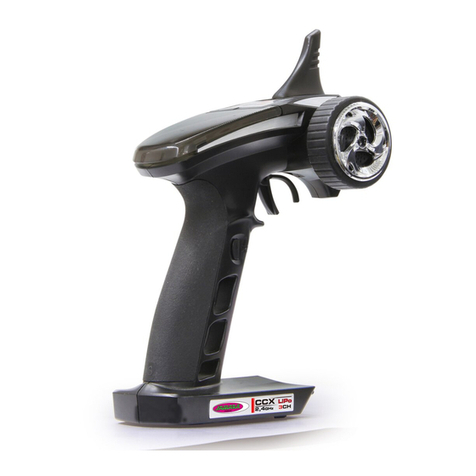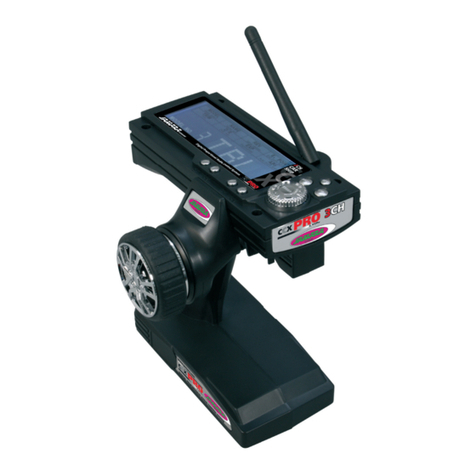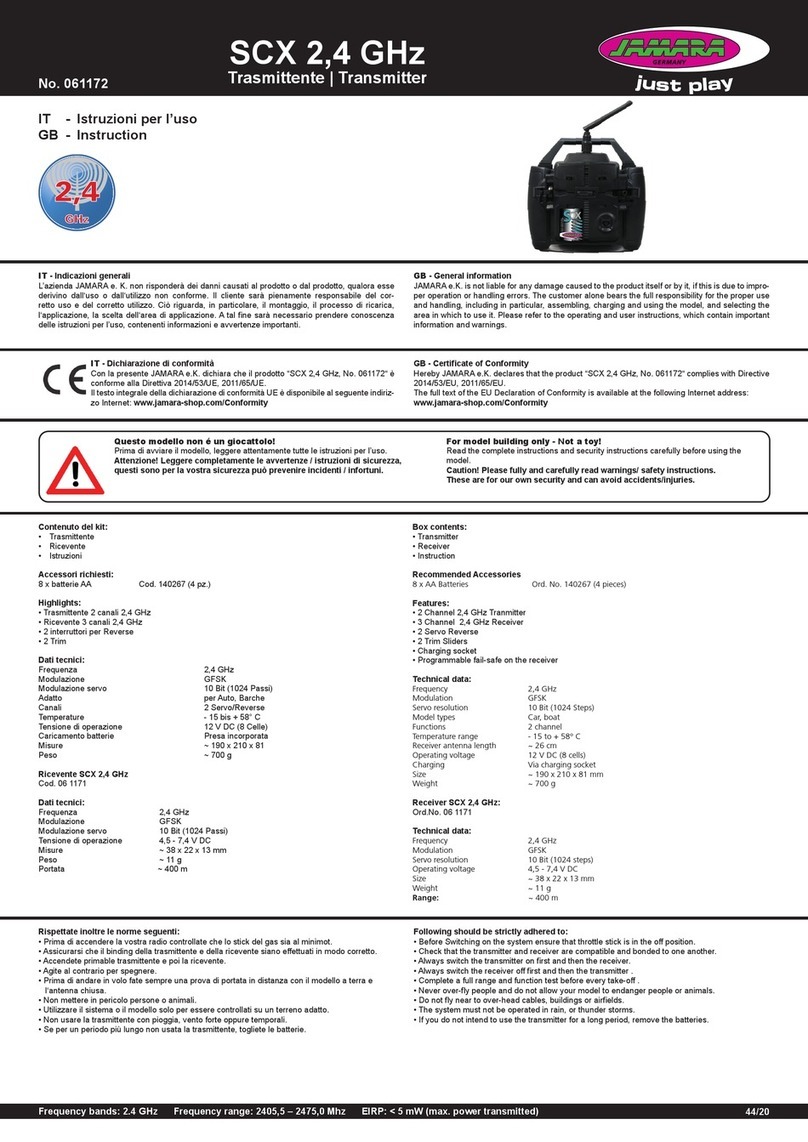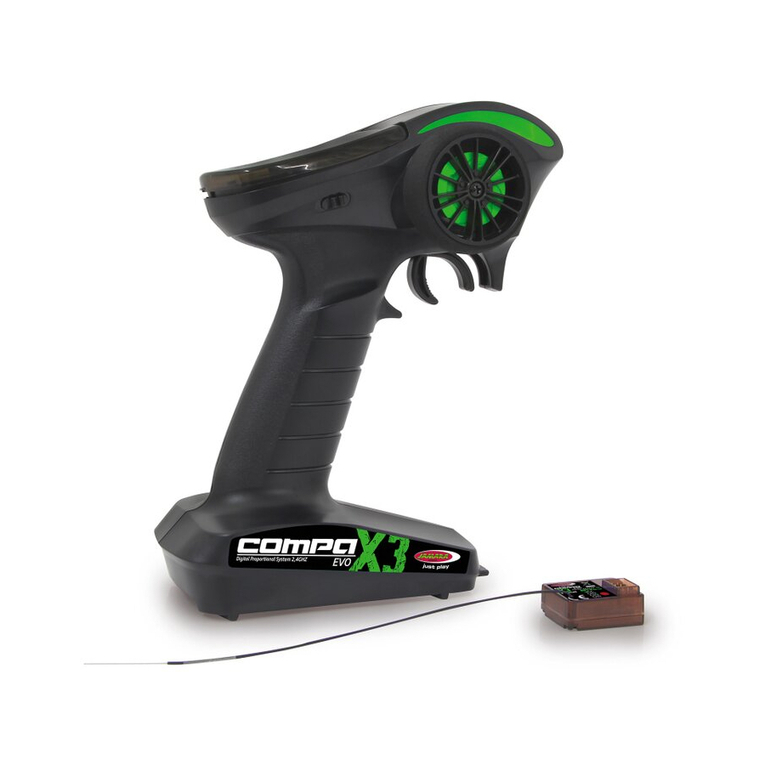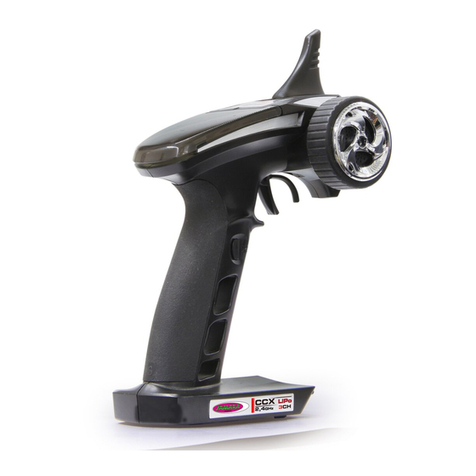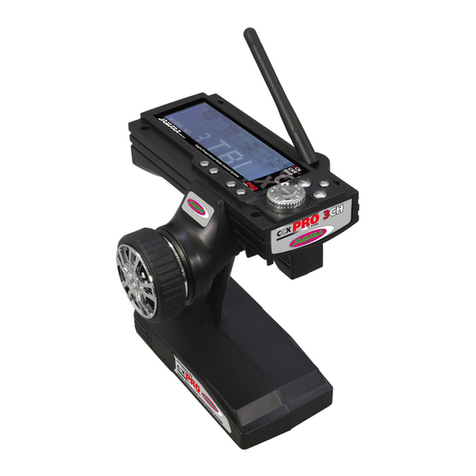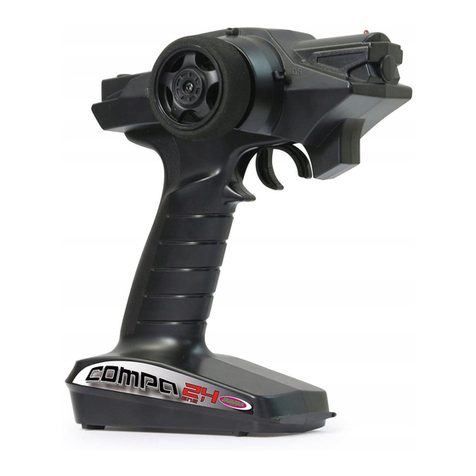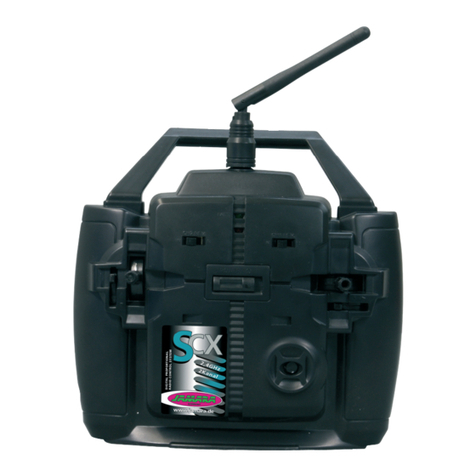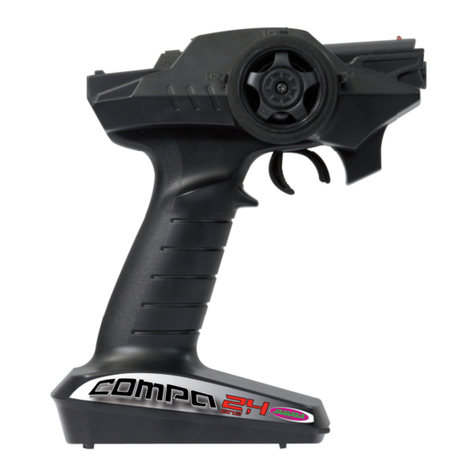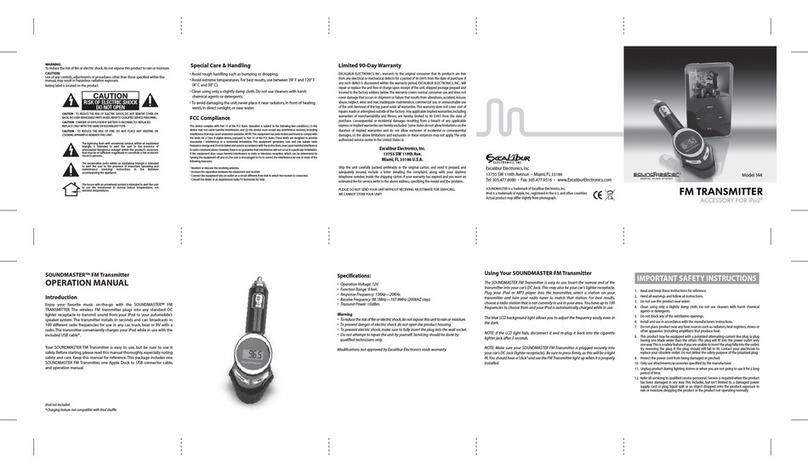
IT - Istruzioni per l’uso
GB - Instruction
CCX Pro 2,4 GHz
Trasmittente | Transmitter
No. 061200
44/20
IT - Indicazioni generali
L’azienda JAMARA e. K. non risponderà dei danni causati al prodotto o dal prodotto, qualora esse
derivino dall‘uso o dall‘utilizzo non conforme. Il cliente sarà pienamente responsabile del cor-
retto uso e del corretto utilizzo. Ciò riguarda, in particolare, il montaggio, il processo di ricarica,
l‘applicazione, la scelta dell‘area di applicazione. A tal ne sarà necessario prendere conoscenza
delle istruzioni per l’uso, contenenti informazioni e avvertenze importanti.
GB - General information
JAMARA e.K. is not liable for any damage caused to the product itself or by it, if this is due to impro-
per operation or handling errors. The customer alone bears the full responsibility for the proper use
and handling, including in particular, assembling, charging and using the model, and selecting the
area in which to use it. Please refer to the operating and user instructions, which contain important
information and warnings.
IT - Dichiarazione di conformità
Con la presente JAMARA e.K. dichiara che il prodotto “CCX Pro 2,4 GHz, No.
061200“ è conforme alla Direttiva 2014/53/UE, 2011/65/UE.
Il testo integrale della dichiarazione di conformità UE è disponibile al seguente indiriz-
zo Internet: www.jamara-shop.com/Conformity
GB - Certicate of Conformity
Hereby JAMARA e.K. declares that the product “CCX Pro 2,4 GHz, No. 061200“ complies with
Directive 2014/53/EU, 2011/65/EU.
The full text of the EU Declaration of Conformity is available at the following Internet address:
www.jamara-shop.com/Conformity
Contenuto del kit:
• Trasmittente
• Ricevente
• Istruzioni
Accessori richiesti:
8 x batterie AA Cod. 140267 (4 pz.)
Trasmittente computerizzata in 2,4GHz.
Caratteristiche:
• 3 canali, programmabile
• 2,4 GHz
• Dual Rate
• Servorevers
• Trim posizione neutrale del servo e grado di movimento
• 1024er Display
• 100mW Frequenza
• 10 modelli in memoria
• Curva-Expo
• ABS programmabile
• Programmabile tramite Jog/Dial Rad
• Illuminazione Display
• Indicatore voltaggio e segnalazione low battery
• Compatibile con la ricevente CCX
• Presa di carica
• Presa 3,5mm simulatore di volo
• Dimensioni 159 x 127 x 196 mm
• Peso 405 g
• Fail-Safe programmabile
• Display: 100 x 35 mm
Dati tecnici:
Banda di frequenza 2.4 GHz
Canali 3
Modulazione GFSK
Servo risoluzione 10-bit (1024 passi)
Tensione di esercizio 4.5 - 7,4 V DC
Dimensioni 37 x 22 x 13 mm
Peso 7,6 g
Box contents:
• Transmitter
• Receiver
• Instruction
Recommended Accessories
8 x AA Batteries Ord. No. 140267 (4 pieces)
This transmitter sets new standards in the RC-Car area. The established 2.4 GHz technology from
our CCX car radio was adopted into the CCX Pro. A huge display and easy programming complete
this transmitter.
Features:
• 3ch fully programmable
• 2,4GHz System
• Dual Rate
• Servo reverse
• Adjustment of servo centre and travel
• 1024 display resolution
• 100mW Frequency hopper
• 10 model memory
• Adjustable Expo
• 3 stage ABS setting
• Programming by Jog/Dial wheel
• Display backlight
• Voltage indicator with audible low voltage warning
• Compatible with CCX receivers
• Charging socket
• 3,5mm jack and simulator connection
• Weight 405 g
• Dimensions 159 x 127 x 196 mm
• Programmable Fail Safe on receiver
• Display: 100 x 35 mm
Technical data:
Frequency 2,4 GHz
Modulation AFHDS
Operating voltage 4,8 - 7,4 V DC
Servo resolution 10 Bit (1024 steps)
Dimensions 37 x 22 x 13 mm
Weight 7,6 g
Questo modello non é un giocattolo!
Prima di avviare il modello, leggere attentamente tutte le istruzioni per l’uso.
Attenzione! Leggere completamente le avvertenze / istruzioni di sicurezza,
questi sono per la vostra sicurezza può prevenire incidenti / infortuni.
For model building only - Not a toy!
Read the complete instructions and security instructions carefully before using the
model.
Caution! Please fully and carefully read warnings/ safety instructions.
These are for our own security and can avoid accidents/injuries.
Rispettate inoltre le norme seguenti:
• Prima di accendere la vostra radio controllate che lo stick del gas sia al minimot.
• Assicurarsi che il binding della trasmittente e della ricevente siano effettuati in modo corretto.
• Accendete primable trasmittente e poi la ricevente.
• Agite al contrario per spegnere.
• Prima di andare in volo fate sempre una prova di portata in distanza con il modello a terra e
l‘antenna chiusa.
• Non mettere in pericolo persone o animali.
• Utilizzare il sistema o il modello solo per essere controllati su un terreno adatto.
• Non usare la trasmittente con pioggia, vento forte oppure temporali.
• Se per un periodo più lungo non usata la trasmittente, togliete le batterie.
Following should be strictly adhered to:
• Before Switching on the system ensure that throttle stick is in the off position.
• Check that the transmitter and receiver are compatible and bonded to one another.
• Always switch the transmitter on rst and then the receiver.
• Always switch the receiver off rst and then the transmitter .
• Complete a full range and function test before every take-off .
• Never over- y people and do not allow your model to endanger people or animals.
• Do not y near to over-head cables, buildings or air elds.
• The system must not be operated in rain, or thunder storms.
• If you do not intend to use the transmitter for a long period, remove the batteries.
Frequency bands: 2.4GHz Frequency range: 2405,5 – 2475,0 MHz EIRP: < 30 mW (max. power transmitted)
